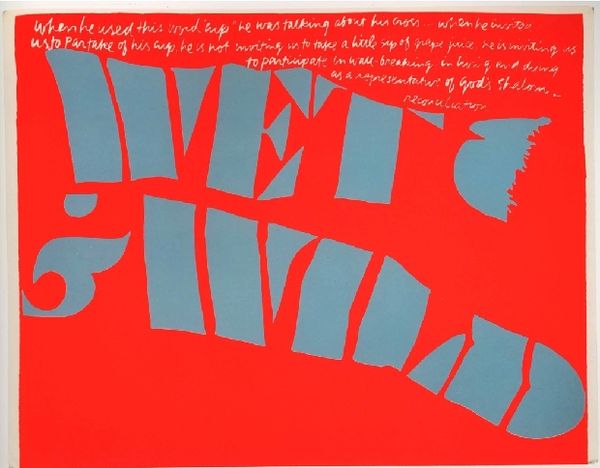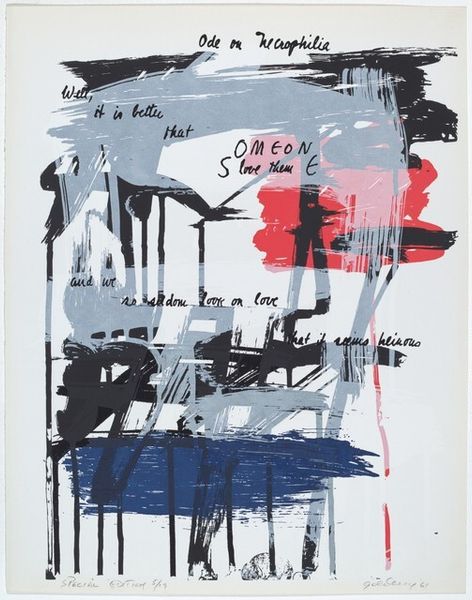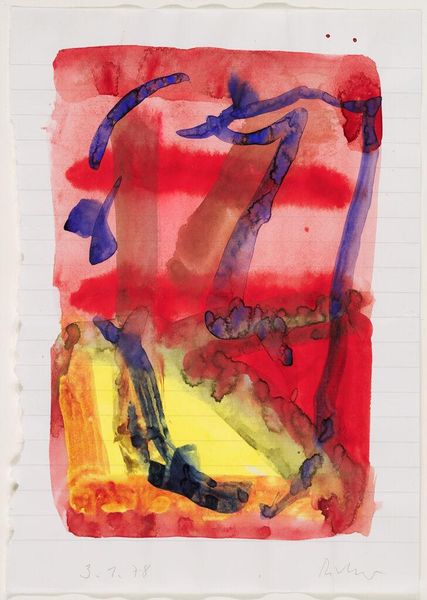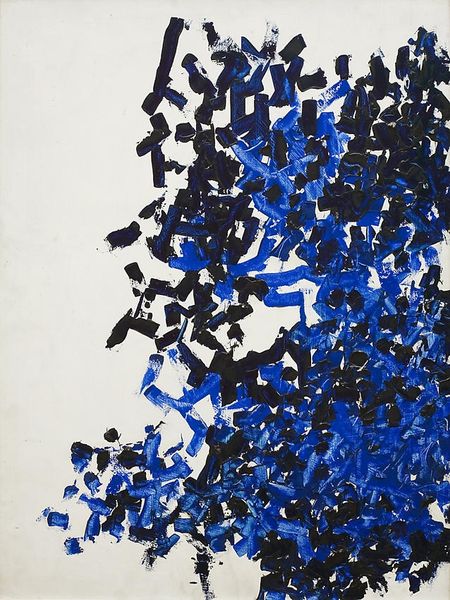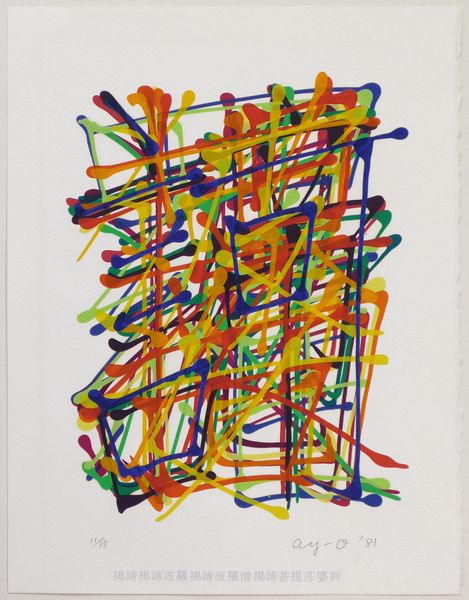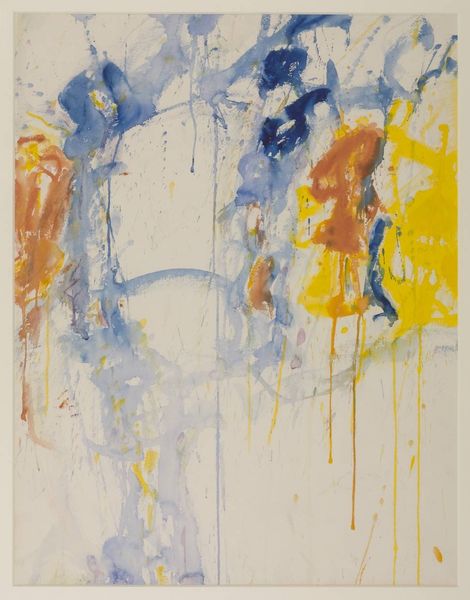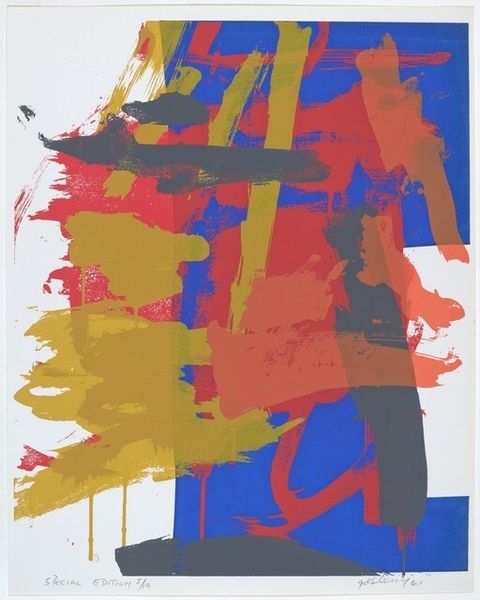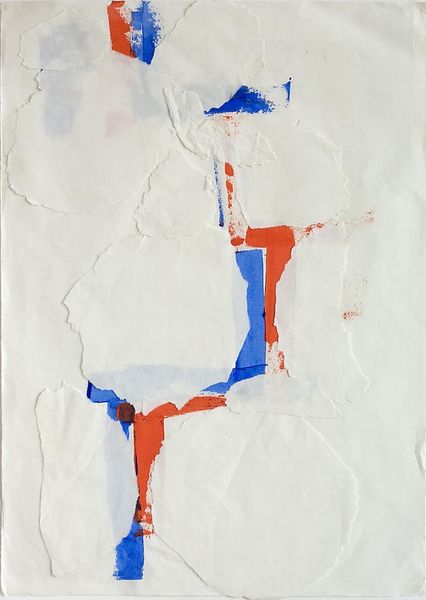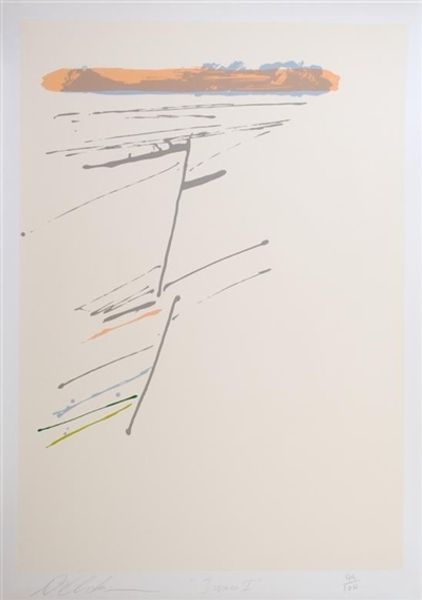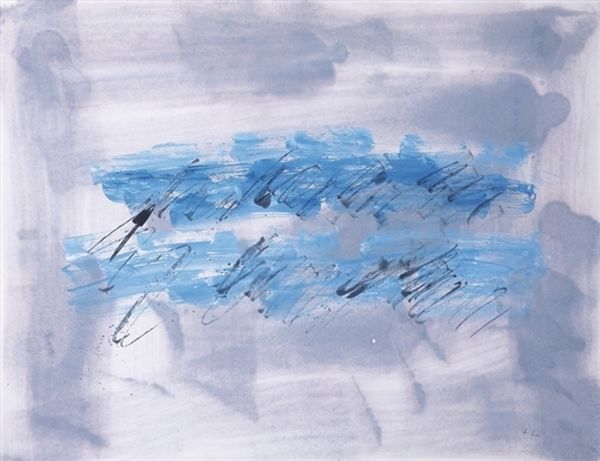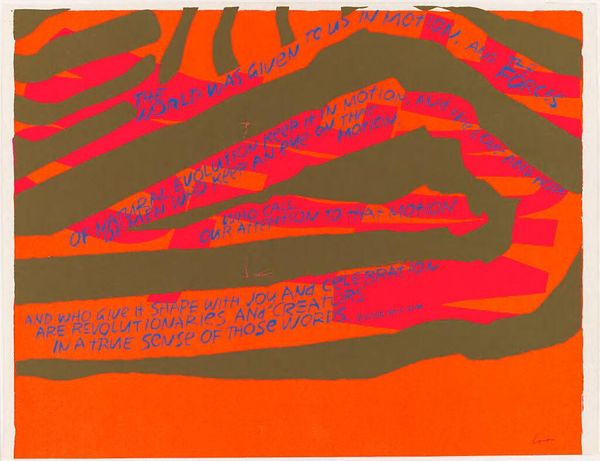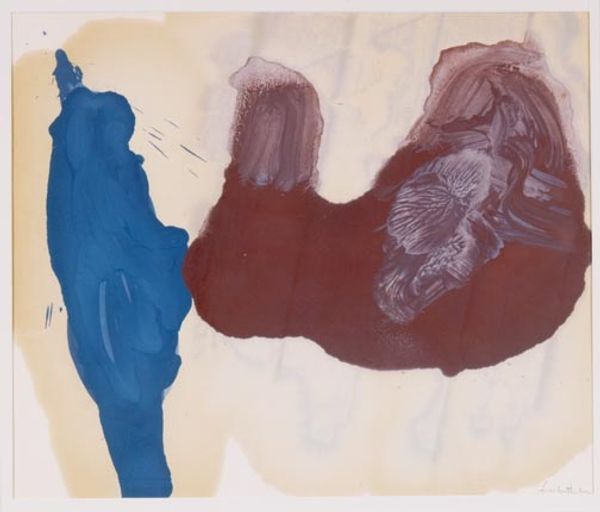
mixed-media, print, textile, watercolor
#
mixed-media
# print
#
textile
#
figuration
#
watercolor
#
modernism
#
watercolor
Dimensions: plate: 42.5 x 34.5 cm (16 3/4 x 13 9/16 in.) sheet: 52.4 x 45.7 cm (20 5/8 x 18 in.)
Copyright: National Gallery of Art: CC0 1.0
Curator: Hockney’s "Made in April," from 1976-77, presents us with an intriguing combination of mixed media, including watercolor and printmaking techniques, even what appears to be textile elements. At first glance, I find the composition quite unusual—the interplay between text and abstract forms creates a rather enigmatic impression. What are your initial thoughts? Editor: Yes, it’s a curious piece. The blue and red markings over the backwards texts are strangely satisfying. What strikes me is the contrast between the very structured text layout and the free-flowing watercolor elements. I’m curious, what is most visually important about the composition in your perspective? Curator: I see the composition primarily as a formal exploration. The superimposition of text, regardless of its legibility, becomes a graphic element. Note the mirroring, not merely of text, but of colour. And observe the contrast between the fluid watercolor washes and the defined lines of the lettering. Ask yourself what results. Editor: Well, I hadn’t considered the deliberate mirroring or its visual significance. It introduces a strong element of balance, but then the asymmetry disrupts that expected harmony. What does the structure communicate to you? Curator: The very presence of text invites an exercise of semiotics and challenges our understanding of narrative. Is it about readability or pattern? Line or volume? The eye is constantly directed by this visual layering; are you drawn in to consider the structure and visual design more deeply than the meaning? Editor: I do think focusing on the form enhances my appreciation of Hockney's intentionality. It moves beyond a simple reading and toward the visual dynamics that capture the eye. Curator: Indeed. Sometimes, the most profound statements are made not through explicit representation, but through the very structure and language of the art itself. We learn how powerful these techniques can be with such a studied and structural methodology.
Comments
No comments
Be the first to comment and join the conversation on the ultimate creative platform.

